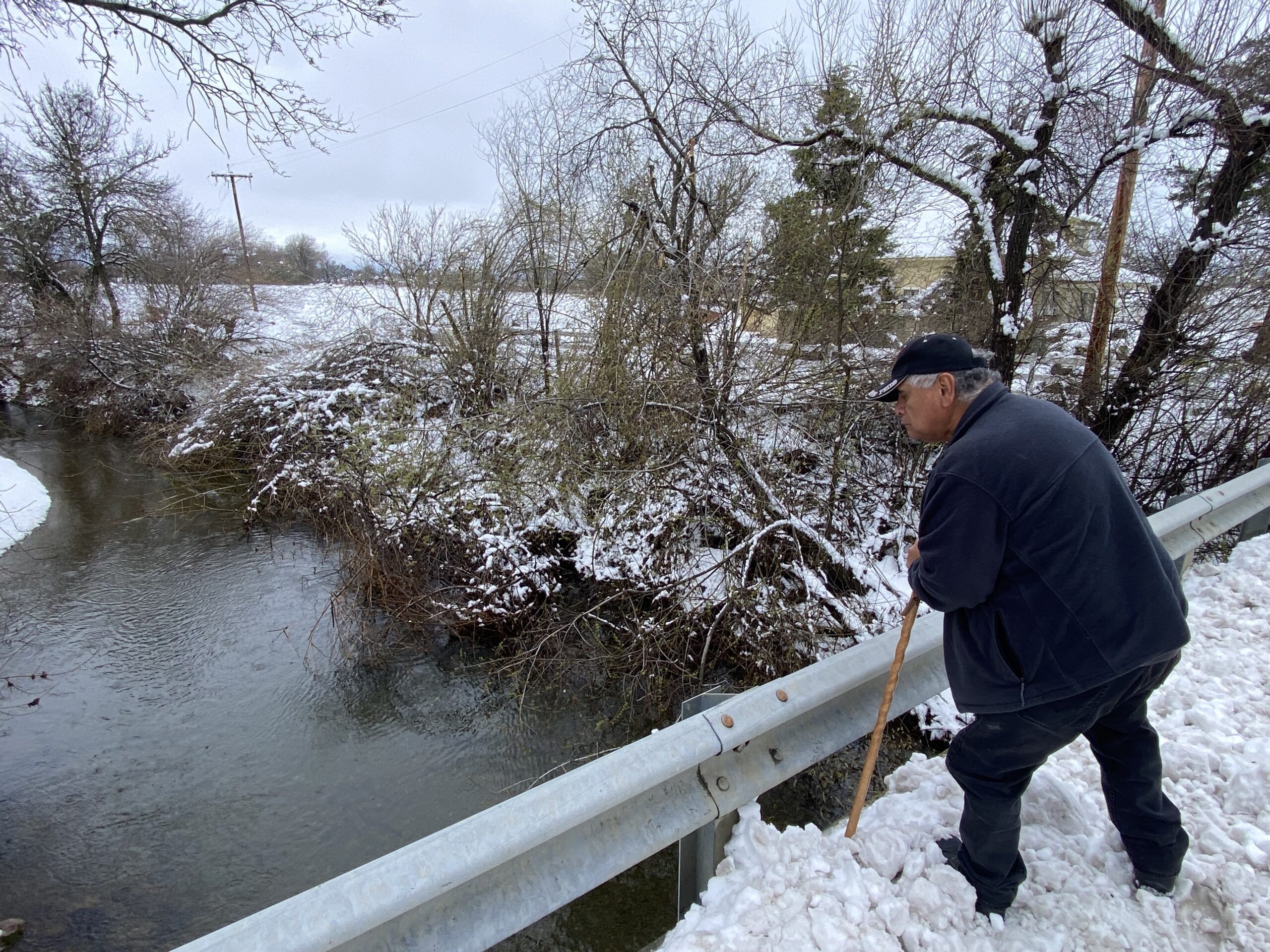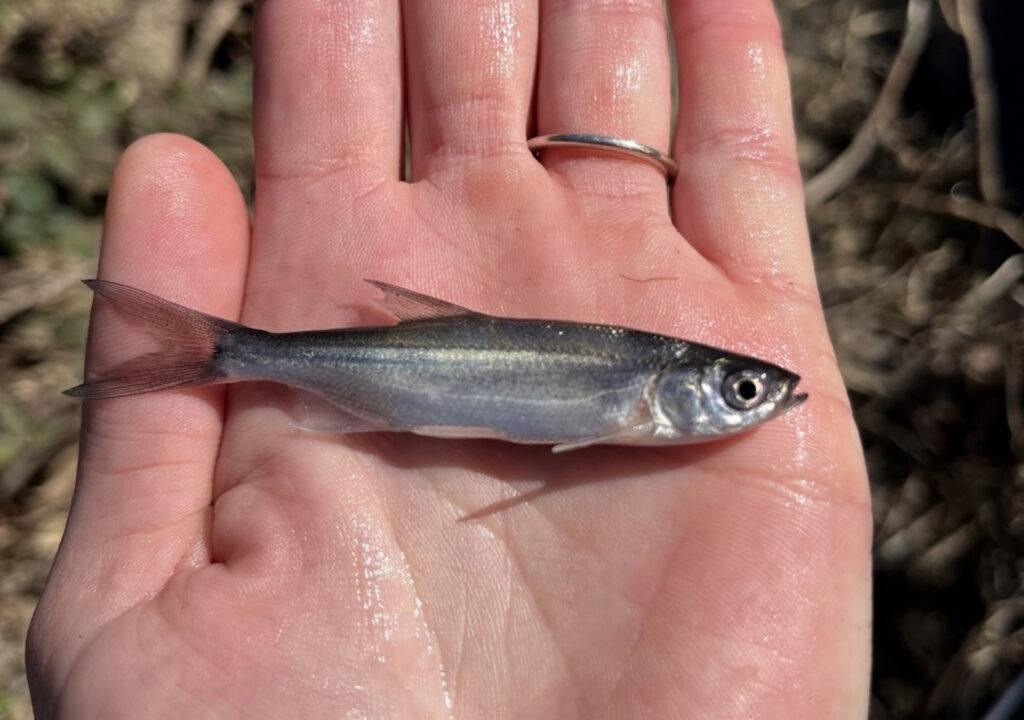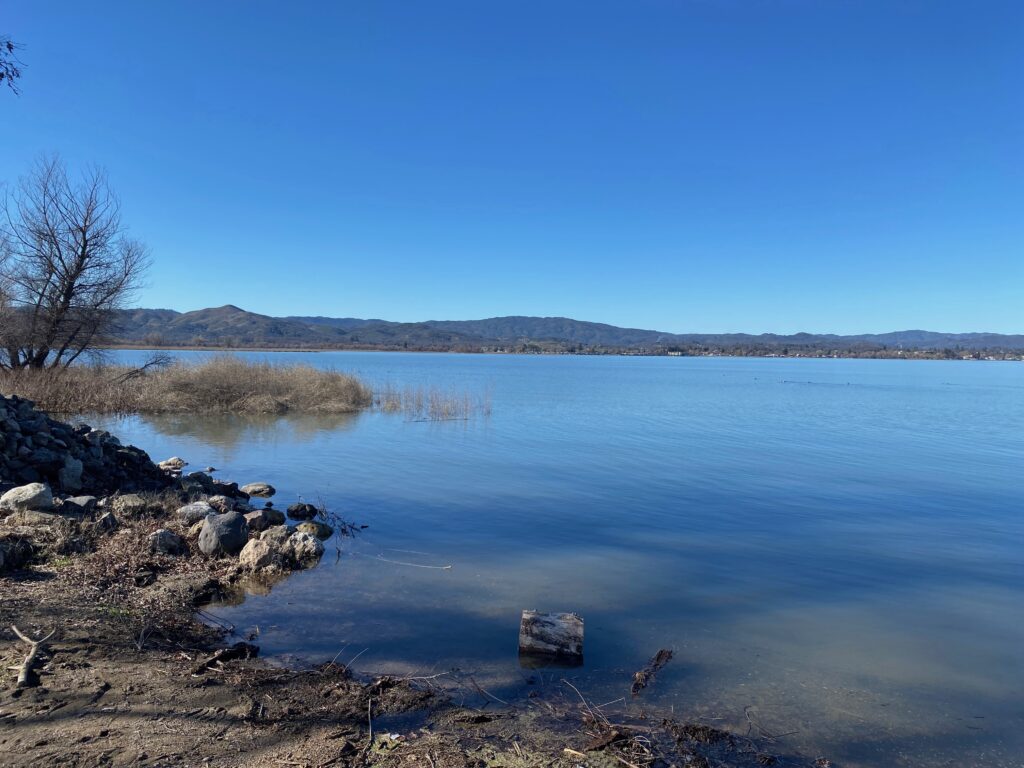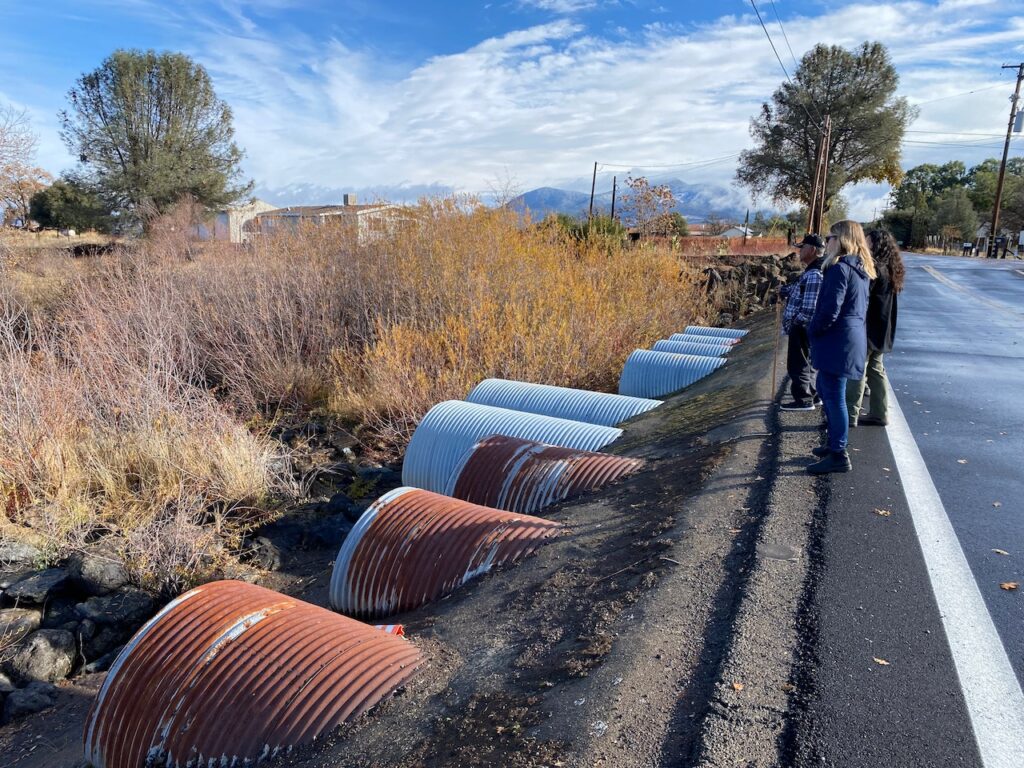
Since the 1950s, four native fish extinctions have taken place in Lake County’s Clear Lake: the thicktail chub, Clear Lake splittail, Pacific lamprey, and hardhead. A fifth endemic species, the Clear Lake hitch, is teetering on the brink.
“Agencies view the hitch as just a fish. But for Tribes the hitch is sacred,” explains Big Valley Band of Pomo Indians tribal elder Ron Montez, Sr. “We believe Creator placed this fish here to help us survive for thousands of years. The chi (Pomo word for hitch) not only fed the seven Tribes around the lake, but it fed Tribes who came in from surrounding counties—Sonoma, Napa, Sacramento—and sustained all these people since time immemorial. That’s gone now. Anyone younger than 30 doesn’t know anything about this.”
Although hitch are equally essential and culturally significant to lakeside Tribes as salmon are to Pacific Northwest First Nations, few people know of their existence. But a recent series of alarming monitoring results, emergency meetings, interventions from Tribes, and unprecedented interagency coordination is now shining a spotlight on the 13-inch-long species and efforts to resolve conflicts over the restorative flows it needs to survive.

During a visit to the top of Cobb mountain in southern Lake County—one source of Clear Lake’s headwaters—leaders of the Cobb Watershed Education and Restoration Project witnessed robust creek flows for the first ten miles. After crossing Highway 29, and heading downstream into the Big Valley basin, it was a far different story. Dams, water diversions, streamside wells, and non-functioning fish ladders left the same creeks – Adobe, Cole, and Kelsey, all critical hitch spawning tributaries – dry, or with barely a trickle.
Awareness of stream flow impairments resulting in fish kills, desiccated hitch eggs, and lack of fish passage is not new to Lake County residents, Tribes, or government agencies. In 2012, alarmed by the hitch’s decline, Clear Lake Pomo tribes partnered with the Center for Biological Diversity to encourage the California Fish and Wildlife Department to take action. In 2014, the California Fish and Game Commission voted unanimously to list the hitch as a threatened species under California’s state Endangered Species Act, and the following year, the U.S. Fish and Wildlife Service agreed to study the hitch for potential federal listing under the federal Endangered Species Act.
As part of that agreement, U.S. Geological Survey scientist Fred Feyrer was tasked with conducting annual fish counts on Clear Lake. His findings stunned Tribal staff: in 2021, he reported witnessing no juvenile recruitment—no surviving hitch babies—for five consecutive years. Last summer, it took Feyrer and Luis Santana, a Robinson Rancheria fish biologist, thirty tries to catch six hitch.
This winter, Feyrer shocked the scientific community again with data demonstrating that every fish species in Clear Lake is undergoing population declines. “To a tee, every one of the fish we’re sampling is in dramatic decline,” he reported. “What’s particularly striking is that this is a suite of fish who have very different life histories and reproduction patterns. So something is going on—factors within the lake are impacting other species.”
Given that Clear Lake is one of the world’s most polluted lakes, due to legacy mercury and DDD (a precursor to DDT) poisoning and increasingly frequent harmful algal blooms producing cyanotoxins, in retrospect, these findings shouldn’t be surprising. And they point to two core facts: saving the hitch will be a complex undertaking, and everything done to save the hitch will likely help save all the other fish, too.
Climate change amplifies the challenges wherever agricultural uses interface with critical wildlife habitat, especially during California’s ongoing historic drought. The most vexing question for the Clear Lake watershed, which has everyone scratching their heads and scrambling for solutions, is how to ensure sufficient flow in tributaries to support successful juvenile hitch recruitment.
Scientists recommend a baseline flow of 34 cubic feet per second when the hitch enter creeks to spawn between February and May, followed by a potamodromous (entirely freshwater) migration weeks later, when juveniles and adults make their way back to the lake. Despite recent heavy rains and snowfall, no one is confident that short-term precipitation will be sufficient to keep water flowing in Lake County creeks for the entire spawning season.

In recent standing-room-only meetings held by the Lake County Board of Supervisors to discuss an emergency proclamation for the hitch, vineyard owners proclaimed unified support for the hitch but adamantly denied that their water use had any significant bearing on dried-up creekbeds, desiccated egg masses, or stranded and dead fish documented during prior hitch migrations. Their fears of potential water rights curtailments ultimately resulted in County Supervisors removing references in the proclamation to any regulatory steps that would help establish interim or restorative flows to creeks.
Side conversations between Farm Bureau officials and Tribal staff revealed a more complicated story: surprise at the extent of diversions shown in a map created by the State Water Resources Control Board, and anecdotal knowledge of farmers reporting exaggerated water use in order to retain future water rights—”the use it or lose it” practice common to agriculturalists throughout the West, even during drought.
In testimony at the Supervisors’ meeting, Haji Warf, a farmer with land bordering Upper Lake waterways, argued for heightened accountability within the farming community. “Hundreds of straws simultaneously sucking out water is going to cause a rapid depletion—that’s just common sense,” he said. “I support immediately putting meters on all domestic and agricultural wells tapping groundwaters that feed local streams. Both Mendocino and Sonoma counties have some form of well monitoring, even though they don’t have an imminent extinction event like we do in Lake County.”
Water-use planning and conservation measures in adjacent regions show promise for application in Lake County. Advocates for the hitch point to the success of strict regulatory guidelines along the Russian River in Sonoma County, where, to prevent stranding and mortality of salmonids, water diversions for frost protection are subject to state-approved water demand management programs. “The winegrape industry deserves credit for its actions, and the State Water Board and wildlife agencies deserve credit for bringing the issue forward,” wrote Brian Johnson, California director of Trout Unlimited, in a 2016 legal analysis of the Russian River frost protection rule.
In Mendocino County, in response to declining salmon and steelhead populations, 30 vineyards in the Navarro River watershed did the work to attain fish-friendly certification. Hundreds of other vineyards throughout major watersheds in California have done the same, including vineyards along Putah Creek in southeast Lake County. Yet vineyards located along hitch-bearing creeks are noteworthy for their lack of participation in the program and their opposition to restoration programs benefiting migrating fish.
One of the most significant barriers to hitch passage involves a dysfunctional fish ladder and culvert along Kelsey Creek in the Big Valley basin. The restoration of this site would improve riparian habitat for birds and other wildlife, help raise the local water table, and significantly enhance water flows further downstream. Funding for the project, along with all state, federal, and local permits, has been secured. “The project is literally ready to break ground!” says Angela DePalma-Dow, Lake County Water Resources Department Invasive Species Program coordinator. Yet the project remains stalled, due to a single landowner denying access to a key portion of the streambed needed to begin the construction.

“As Pomo people we were placed in this area, and provided for with everything we needed to live: an abundance of waterfowl, plants, berries, acorns, wildlife. Our relationship with the hitch is one of them sacrificing their lives to help us survive. To honor their sacrifice, we have a call to protect and watch over them,” said Tribal member Ron Montez, Sr. during testimony about the hitch emergency at a 2022 California Fish and Game Commission meeting.
Mr. Montez’ testimony—which had most of the audience in tears—resulted in a historic first: the Commissioners pledged to bring together three state agencies (the State Water Resources Control Board, the Department of Water Resources, and the Department of Fish and Wildlife), one federal agency (the Fish and Wildlife Service), and multiple county departments to a December summit at the Big Valley Rancheria to compare notes, lay their cards on the table, and develop an action plan to save the hitch.
At the summit, it became apparent to participating Tribal staff that no state or county agency has comprehensively monitored water use in Lake County, or effectively responded to complaints of illegal diversions or overuse. “Your enforcement system is broken,” asserted Sarah Ryan, environmental director for the Big Valley Band of Pomo Indians, referring to 2009-2014 data from the Lake County District Attorney’s office showing that only 13% of streambed violations within the Big Valley basin—the ancestral territory of both the Tribe and the hitch—had resulted in corrective actions.
In response to these findings and others, including Feyrer’s data sets, state agencies rapidly mobilized to assemble more complete water use data sets and provide additional resources for restoration, monitoring, and enforcement. In addition to Lake County’s passage of the emergency proclamation, the Fish and Wildlife Department and the UC Davis Tahoe Environmental Research Center established hitch task forces. Three state agencies conducted joint creek monitoring training sessions with Tribal staff, and the State Water Board issued a letter encouraging the agricultural community to adopt voluntary measures including reducing surface-water diversions and groundwater pumping; coordinating irrigation actions with neighbors; filling reservoirs and water tanks earlier in the rainy season; investing in streambed maintenance and restoration; and initiating “pump-back projects” to release water back into the creeks when needed.
Local community-based organizations are also stepping up to help. The Cobb Watershed Education and Restoration Project, an effort that began as an education project, has pivoted to focus on creekside stewardship actions in partnership with Tribes to address connectivity issues that endanger the hitch. Thus far, the project, benefiting from years of relationship-building, has inspired a dozen landowners to overcome concerns about permitting difficulties and agency oversight to initiate restoration measures along upstream tributaries.
“We hope our work can inspire other Clear Lake communities, especially in areas with impaired waterways, to come together with Tribes to save the hitch,” said project leader Eliot Hurwitz. “It will take both an ecological and a cultural transformation to create healthy waterscapes that flourish for the long-term benefit of all beings.”
As of press time, CDFW had announced a series of collaborative interagency actions in Lake County to save the hitch, accompanied by a $2M initiative to remove barriers to hitch passage on key Clear Lake tributaries. CDFW is dedicating three environmental scientists to coordinate hitch-focused activities that include accelerating wetlands restoration, housing rescued hitch when necessary, and supporting water management efforts to ensure adequate stream flows. CDFW also extended funding for predatory lake fish removal by the Robinson Rancheria of Pomo Indians, a hitch tagging project by the Habematolel Pomo, and stream flow and groundwater monitoring by the Big Valley Band of Pomo Indians.
Top Photo: Ron Montez, Sr., Tribal Historic Preservation Officer for the Big Valley Band of Pomo Indians inspects Adobe Creek, a key spawning tributary for the Clear Lake hitch. Photo: Jeanine Pfeiffer
Vanishing Clear Lake Fish, Biodiversity News
Feds Consider Protections for Clear Lake Hitch, Press Democrat